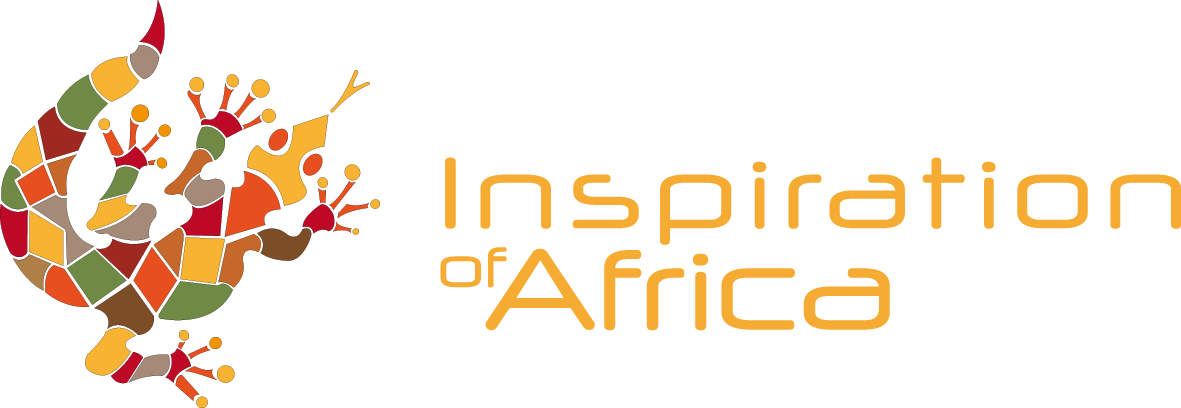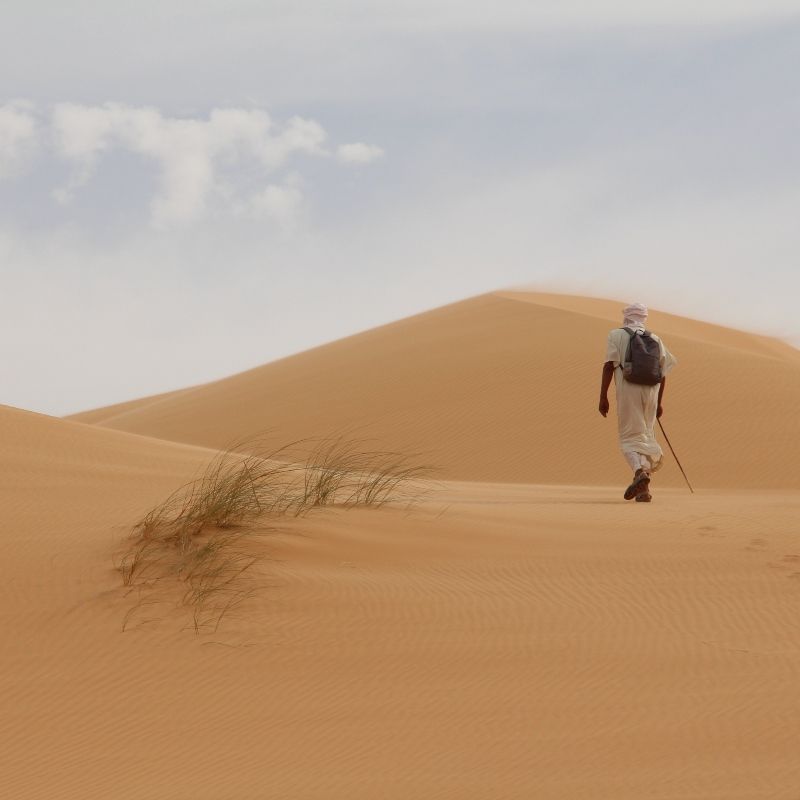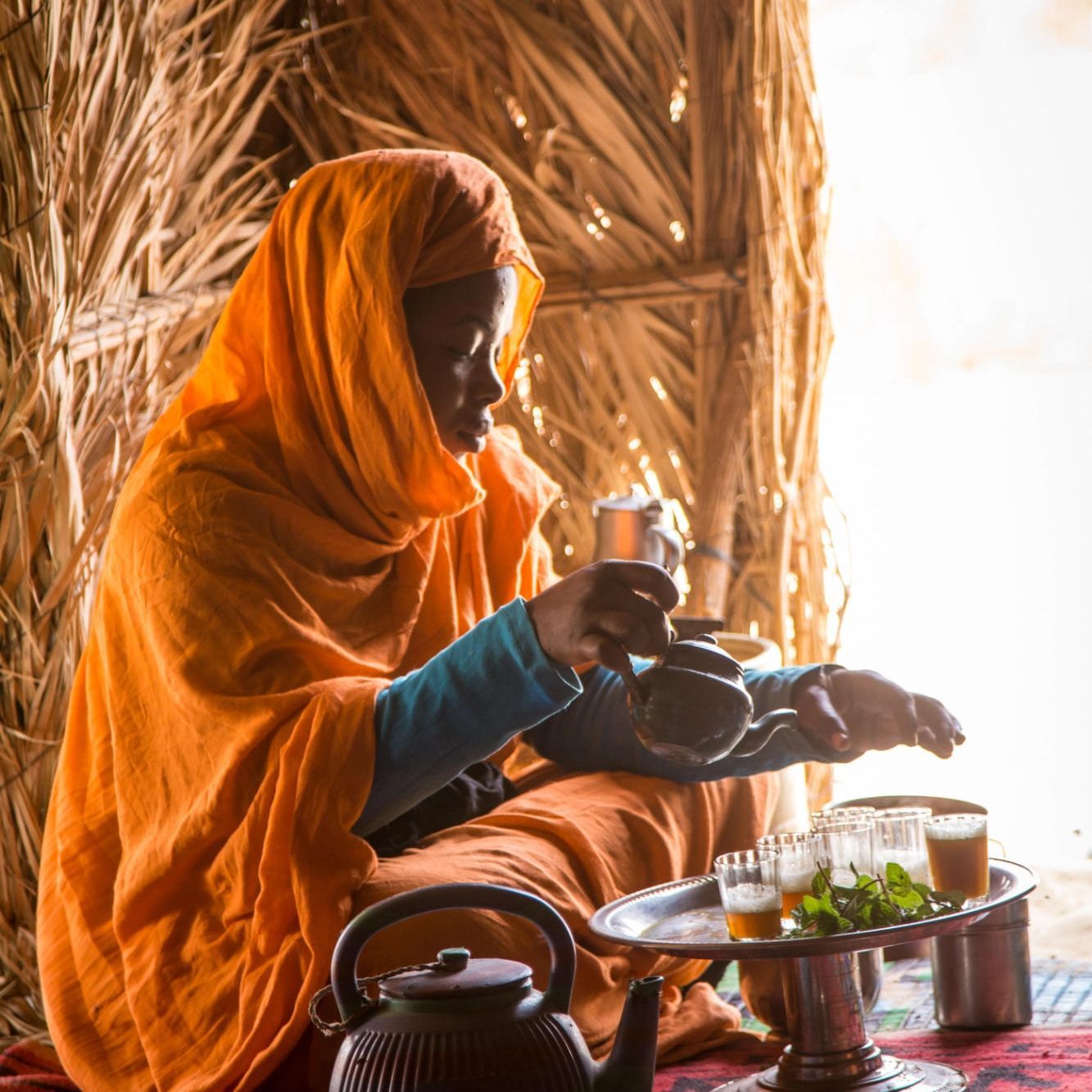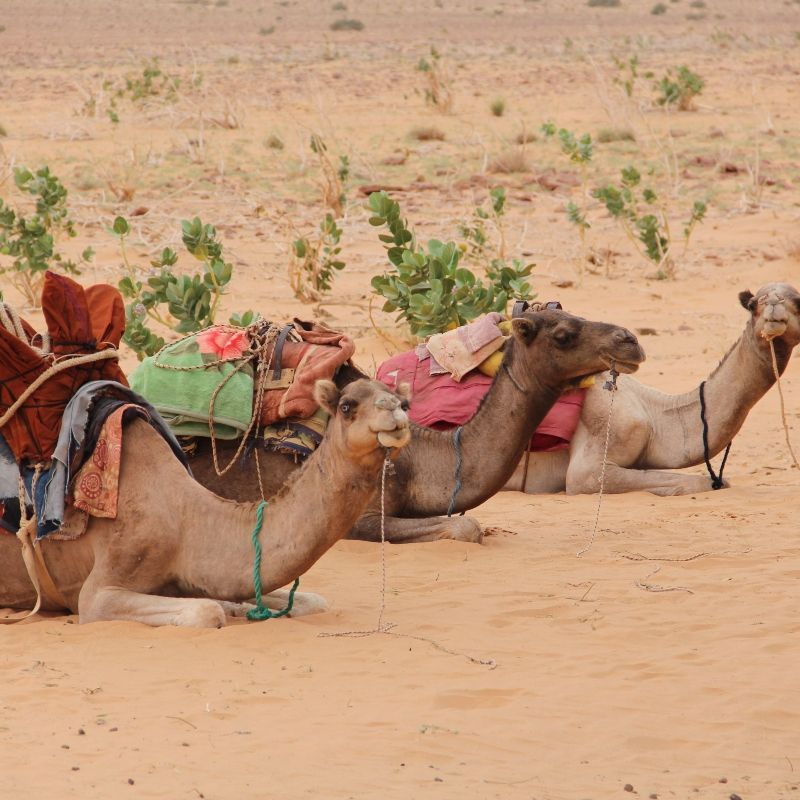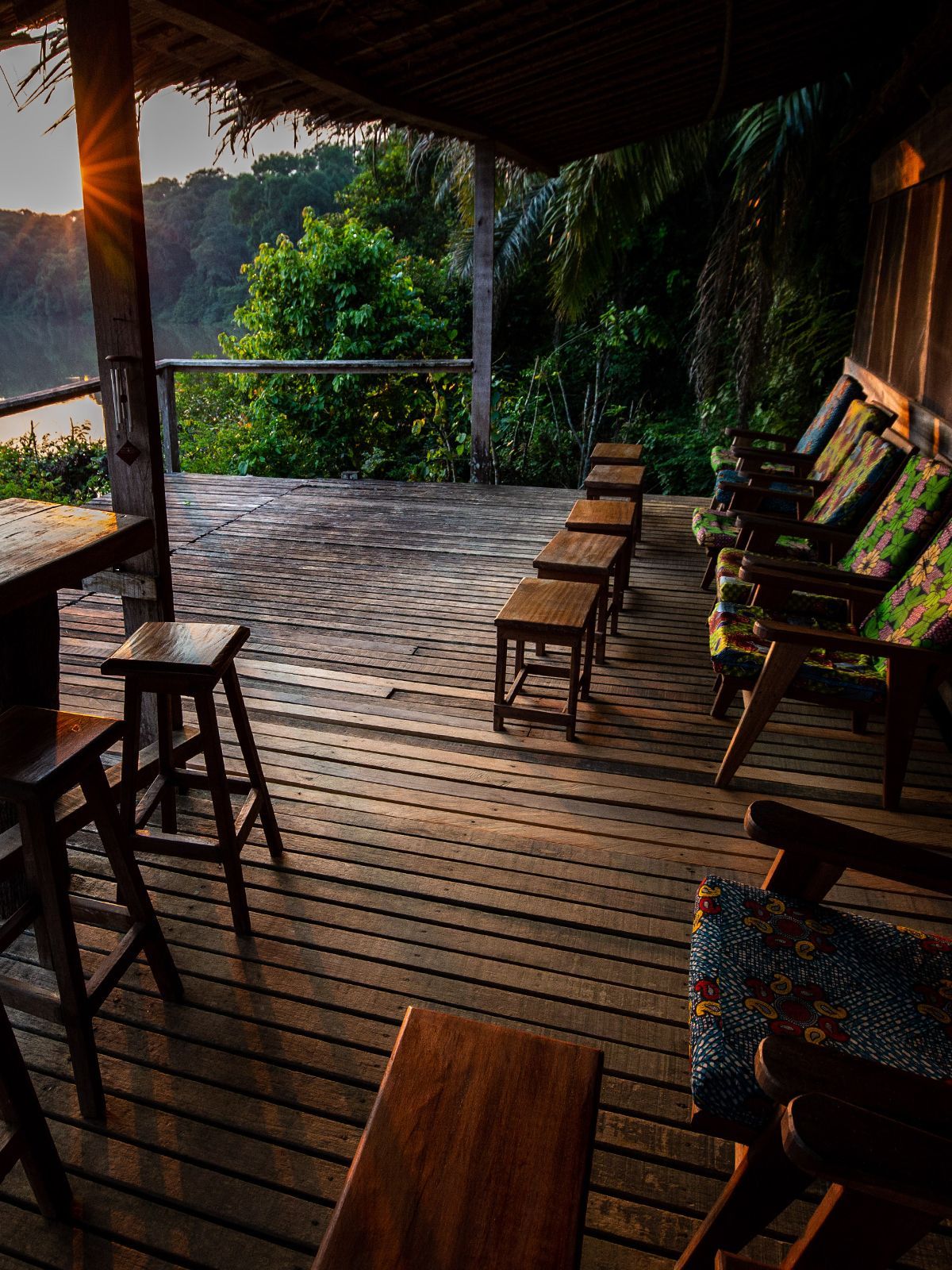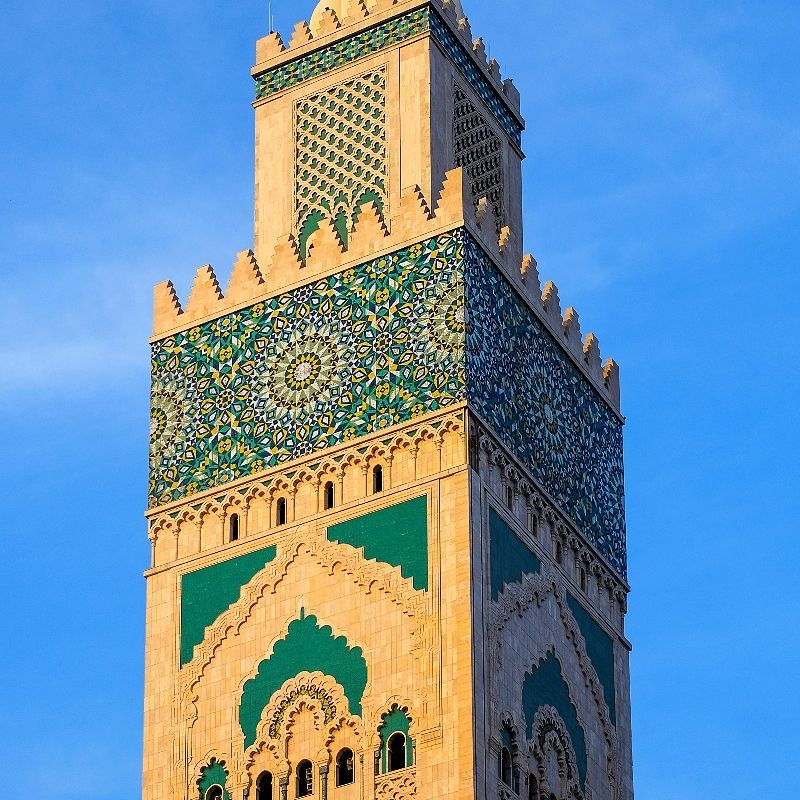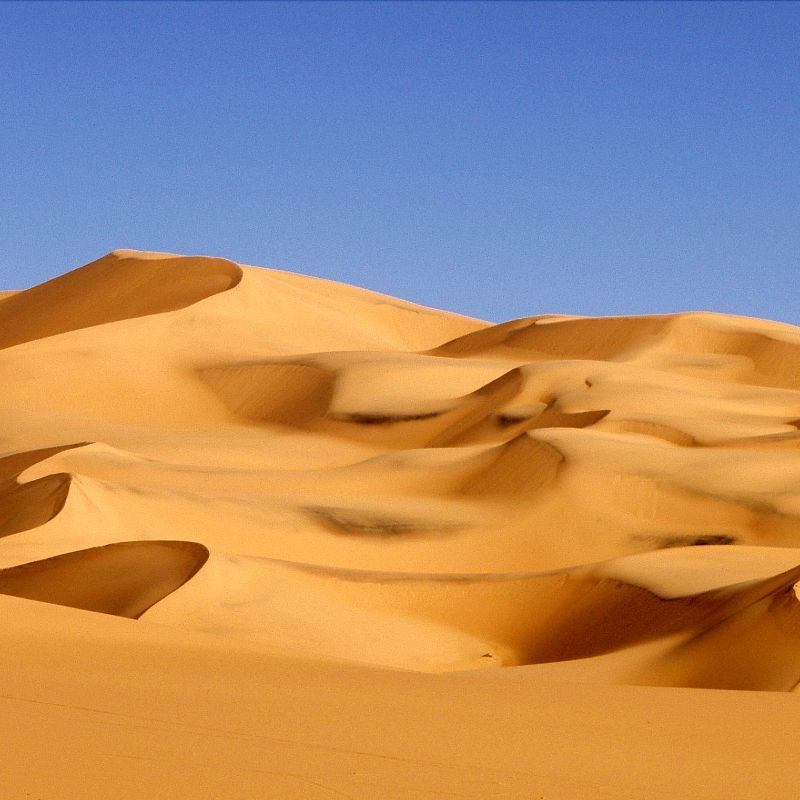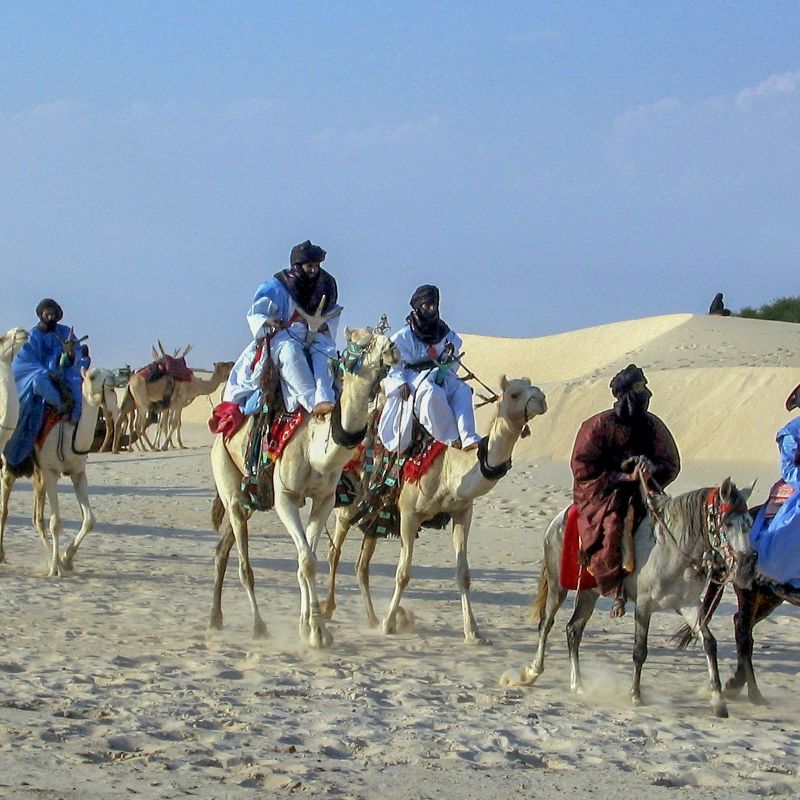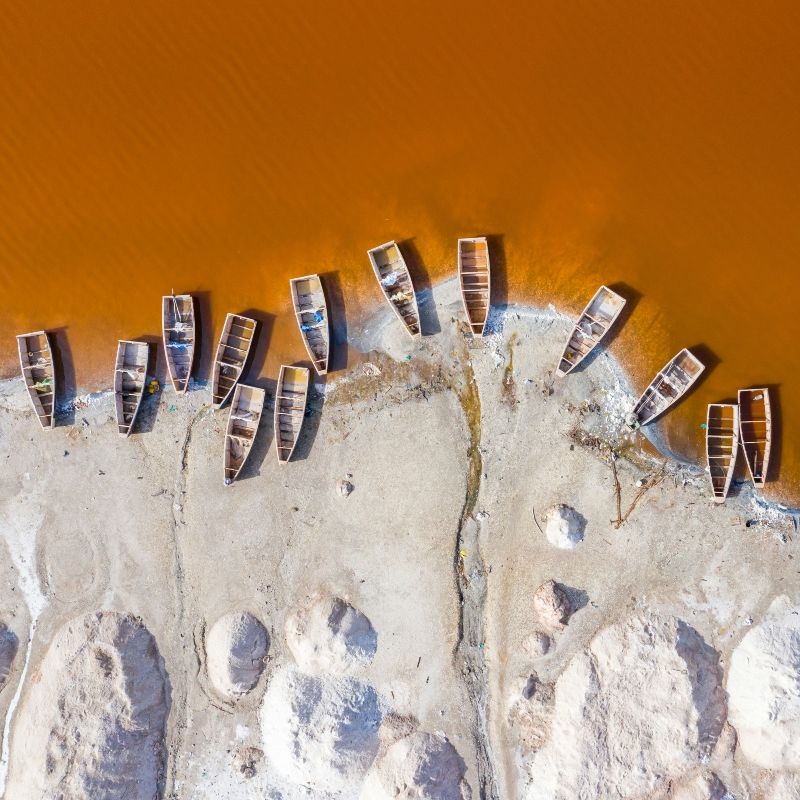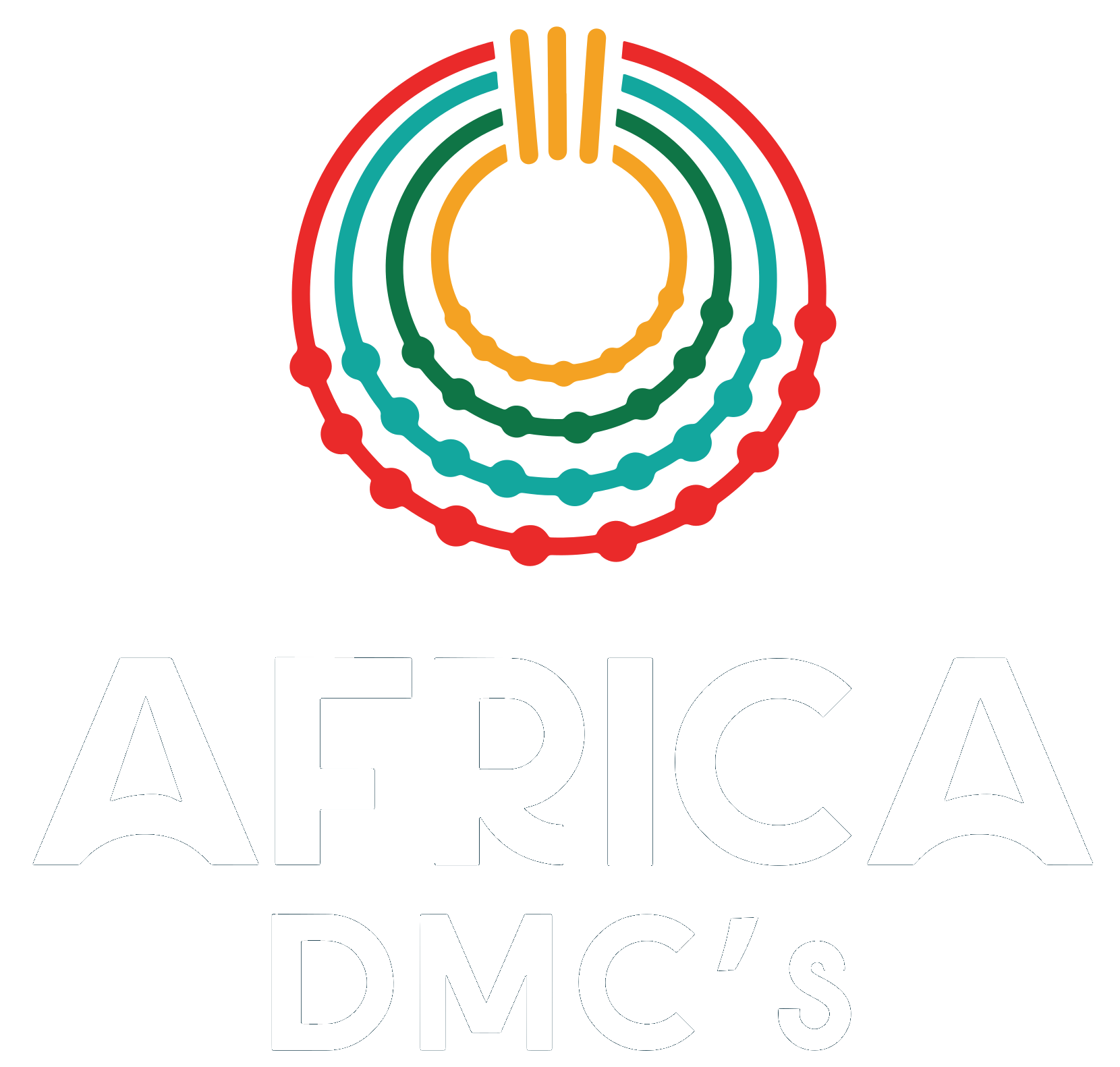Work in Progress ... Page Under Construction
Travel to Mauritania
Mauritania, in Northwest Africa, is defined by its vast desert landscapes, Atlantic coastline, and centuries of trans-Saharan history. The Sahara dominates much of the terrain, shaping both the environment and the way people live and travel. Among its notable desert regions is the Adrar Plateau, home to the historic town of Chinguetti. Once a center of Islamic learning, the town preserves ancient manuscripts in small libraries that still operate today. Nearby, the remains of Ouadane tell of a once-thriving stop on the old trade routes.
A short distance from these towns lies the Richat Structure, also called the Eye of the Sahara. This massive, circular geological formation draws interest from researchers and travelers, though it is remote and not easily reached. The region’s rugged terrain continues to the west, where the Atlantic coast hosts the Banc d’Arguin National Park. Recognized for its ecological importance, the park supports migratory birds and traditional fishing practices maintained by the Imraguen communities.
The capital, Nouakchott, situated near the coast, offers insight into the country’s modern rhythm. Its bustling fish market and coastal port connect the city to the sea, while inland, life slows with long drives across arid plains and through quiet villages. South of the capital, the Senegal River marks a shift to more fertile landscapes, where agriculture plays a larger role in daily life.
For those seeking a more unconventional experience, the Iron Ore Train provides a striking way to move through the desert. Running from the mining town of Zouérat to Nouadhibou on the coast, the train stretches for kilometers, with travelers sometimes riding atop ore-filled wagons as locals do.
Mauritania’s culture reflects its mix of Arab, Berber, and sub-Saharan African influences. Nomadic traditions, shared meals, and tea rituals continue to play a central role in daily life. Travel here often involves navigating open spaces and remote routes, offering a journey shaped by geography, history, and resilience.
Start planning your tailor-made safari holiday
Must Visit in Mauritania
Mauritania, the land of endless dunes, ancient caravan towns, Saharan silence, and nomadic traditions.
A striking blend of desert landscapes, cultural heritage, and untamed space waiting to be explored!
Chinguetti & Ouadane
Founded respectively in the 8th and 11th century these cities are ancient trading centers and caravan stops for pilgrims en route to Mecca. both located in the Adrar region, they offer a glimpse into the past as centers of Islamic scholarship and Saharan trade.
Atar & Terjit Oasis
Atar is the main gateway to northern Mauritania’s desert landscapes. Nearby, Terjit Oasis nestled in a gorge on the western edge of the Adrar plateau with a palm grove stretching a few hundred meters alongside a stream which emerges from a spring offers a cool escape.
Richat Structure
Also called Eye of the Sahara, Guelb er Richât is a prominent circular geological feature in the Adrar Plateau of the Sahara, visible from space. Remote and dramatic, it is a fascinating stop for adventurers and those intrigued by the planet’s geological wonders.
Banc d’Arguin National Park
On the west coast of Mauritania this vast area is the former mouth of the Tamanrasset River. This coastal World Heritage Site is a major site for migratory and breeding birds, including flamingos, pelicans and terns. It is home to traditional Imraguen fishing communities.
Nouakchott
The Saharan city of Nouakchott was a small fishing village until 1957. Now, the capital city, is a blend of modern and traditional Mauritania. Its fish market, sandy streets, and mix of urban energy and desert rhythm offer insight into daily life and contemporary culture.
Nouadhibou
A coastal city near Western Sahara built at the end of a long peninsula, Nouadhibou, the second largest city is known for its fishing port and the haunting shipwrecks along the coast. It is also the final stop of the Iron Ore Train and a base for exploring the coast.
Zouérat & the Iron Ore Train
Zouérat is the country's iron-ore mining hub and is accountable for the majority of Mauritania's export earnings. It is also the place where one of the world’s longest trains begins its desert journey. Riding the Iron Ore Train offers a raw and open view of Mauritania’s vast interior.
Tidjikja & the Tagant Plateau
Tidjikja is a serene desert town surrounded by dramatic landscapes, including rocky outcrops, cliffs, canyons and dunes. Located in the Tagant region, it is known for date cultivation and traditional life in a quieter, less-traveled part of the country.
Mauritania in Video
Nothing documents a destination better than a short video and Mauritania's blend of history, culture, and natural beauty are illustrated well in this one.
Take a look at our Inspiration Africa YouTube Channel where you will find many travel related videos about Africa; don't forget to SUBSCRIBE to be kept up to date with new posts.
Must Do in Mauritania
Each destination offers its own experiences and here are some "must do" activities to experience in Mauritania!
Best Time to visit Mauritania
The best time to visit Mauritania is from November to March, when temperatures are cooler and more comfortable for exploring the desert and coast. During these months, daytime temperatures are mild, and the nights, though cool, are ideal for camping under the stars. The heart of the Sahara becomes more accessible, and cultural events, such as traditional festivals and camel markets, are often held.
From April to June, heat intensifies, making travel in desert regions more challenging.
The period from July to September brings sporadic rains to the southern parts of the country, turning dry riverbeds green but also making some areas less accessible.
October is a transitional month, with landscapes still touched by the rainy season’s greenery.
Inspiration Africa carefully plans journeys to ensure travelers experience Mauritania’s landscapes and culture at their best, maximizing comfort, adventure, and authentic encounters year-round.
Receive our travel inspirations in your mailbox
Mauritania Travel Tips
By default, since we only work on a tailor-made basis, each of our travel projects will always be accompanied by our travel tips on the destinations to be visited. These will of course be adapted to the type of trip envisaged and the reality of the activities and places visited. If you would like general travel advice for Mauritania, please don't hesitate to contact us via the "contact us" button.
Where to Stay in Mauritania
Mauritania’s accommodation options reflect the country’s remote landscapes and traditional lifestyle.
Our mission is to help you select what you like best. While inviting you to explore new options.
Mauritania Combines Well With
Mauritania is a destination offering variety and diversity in itself, although it can easily be combined with its direct neighbors.
